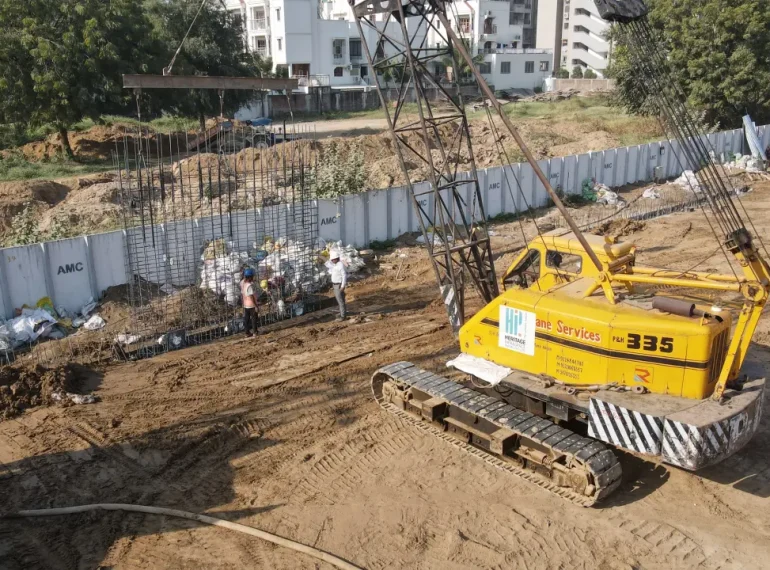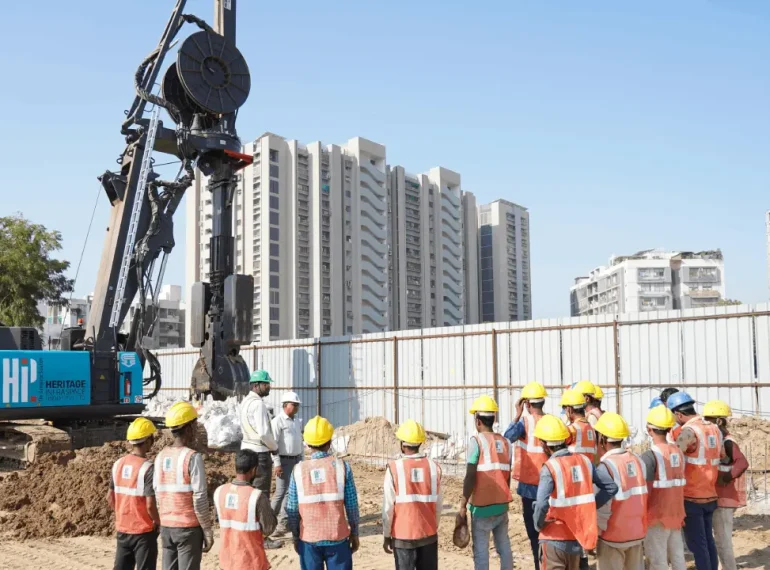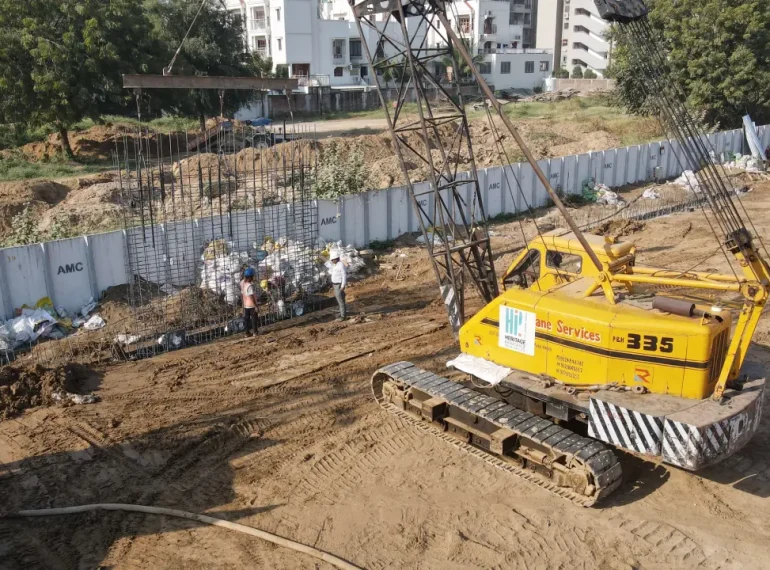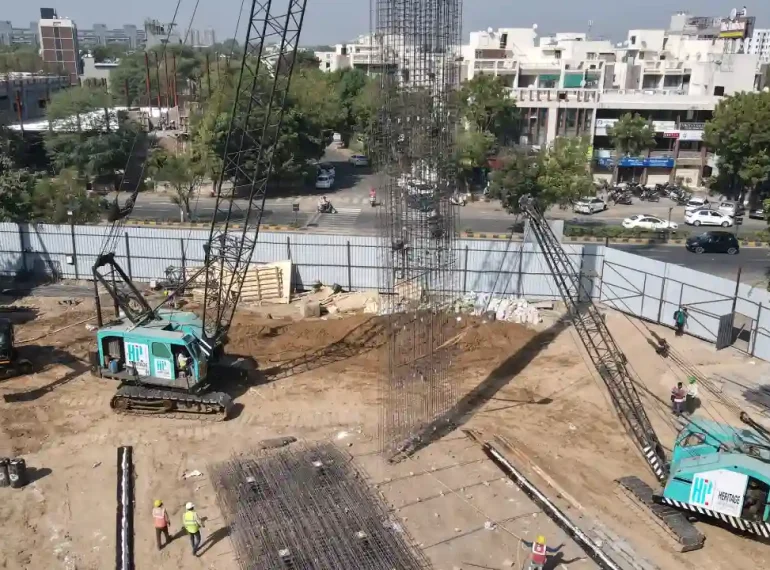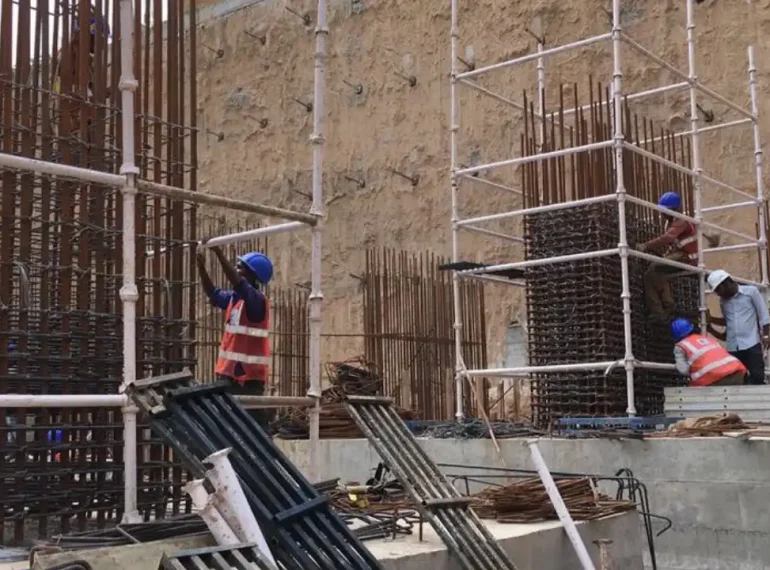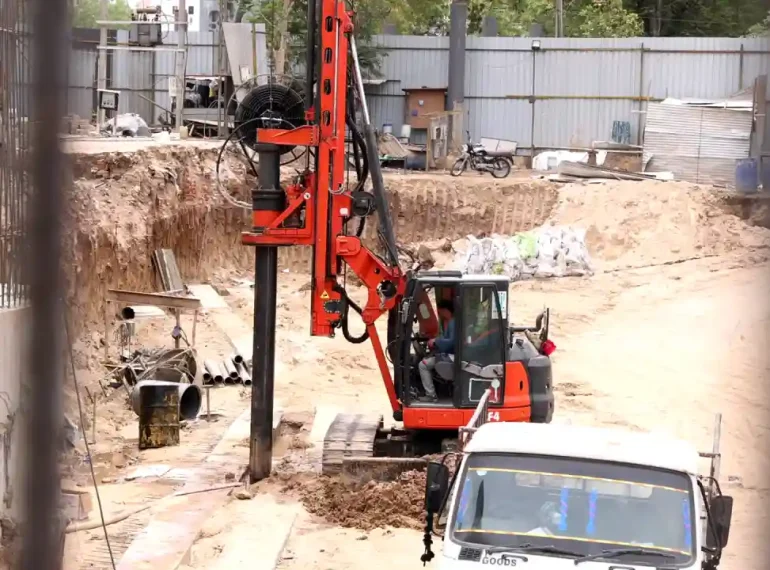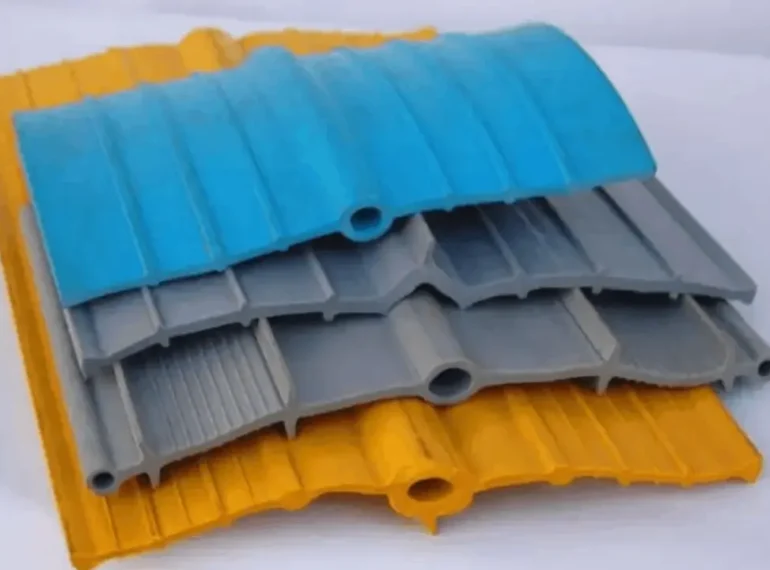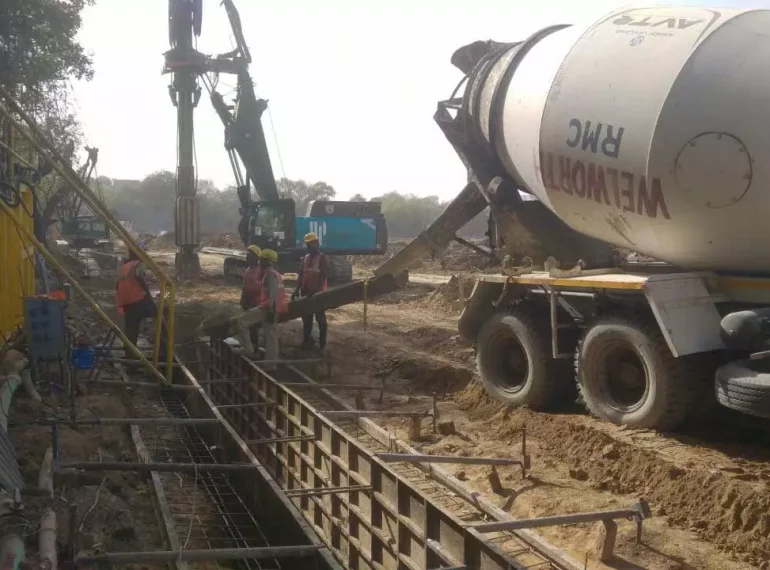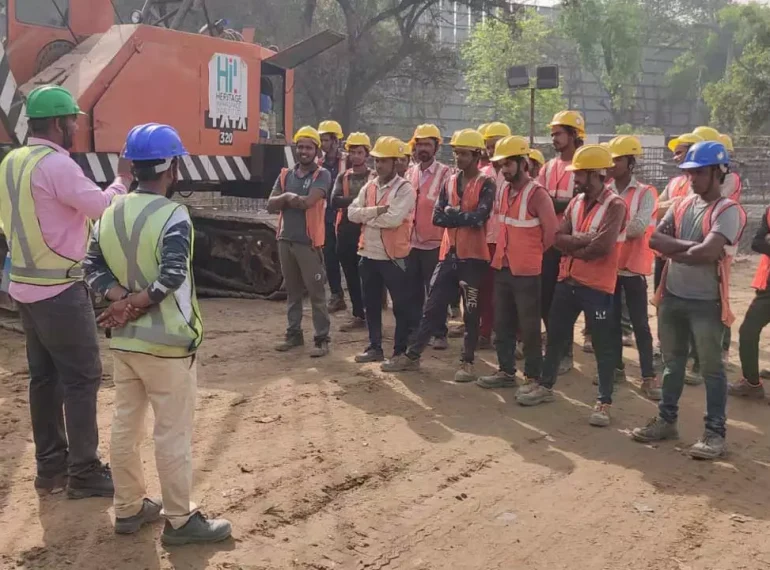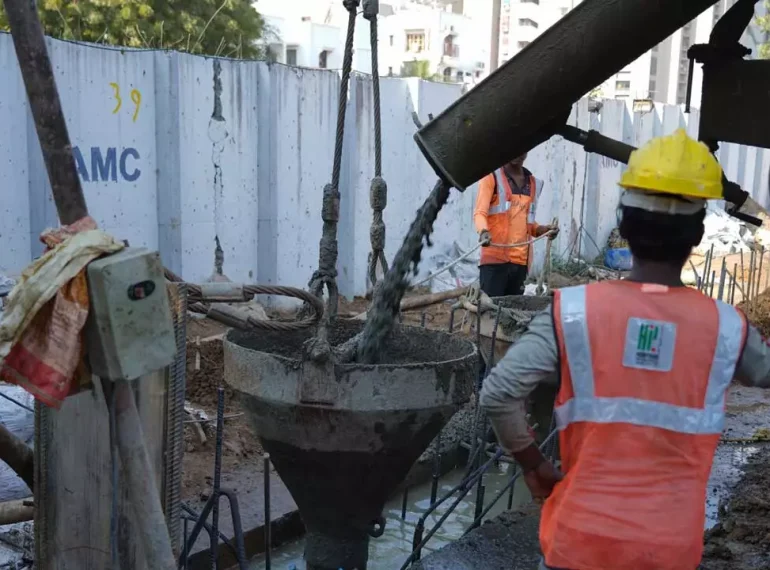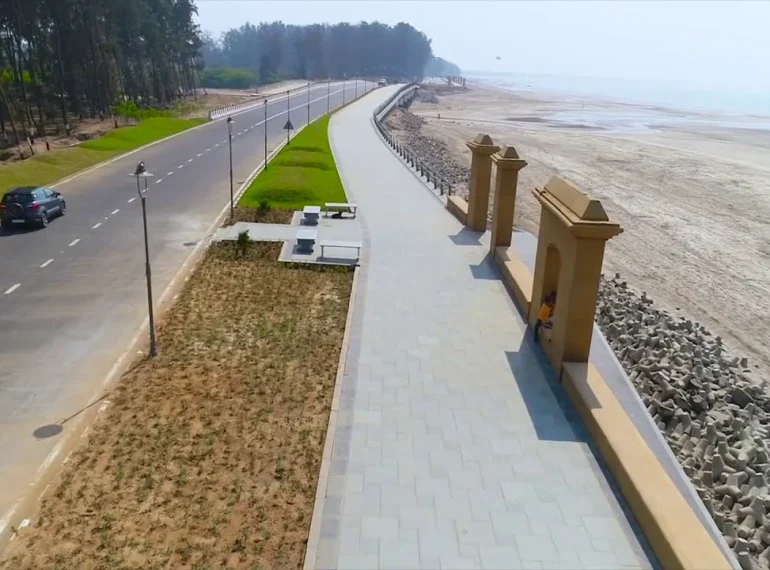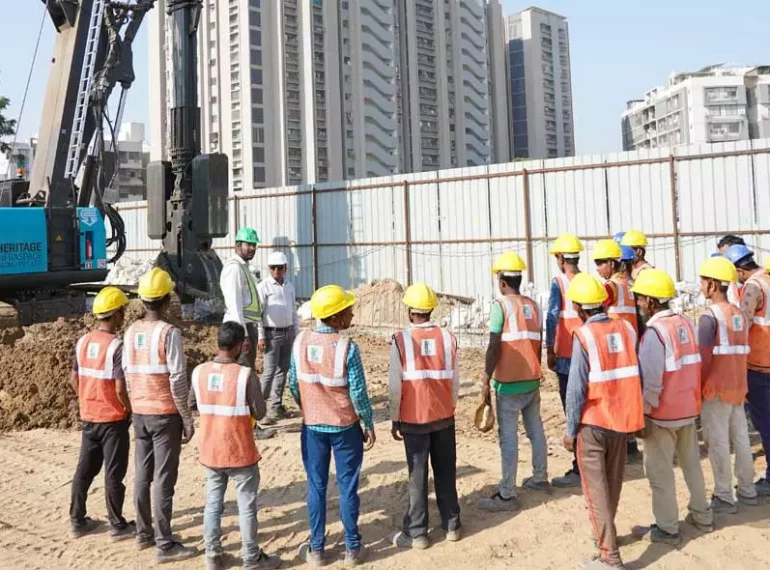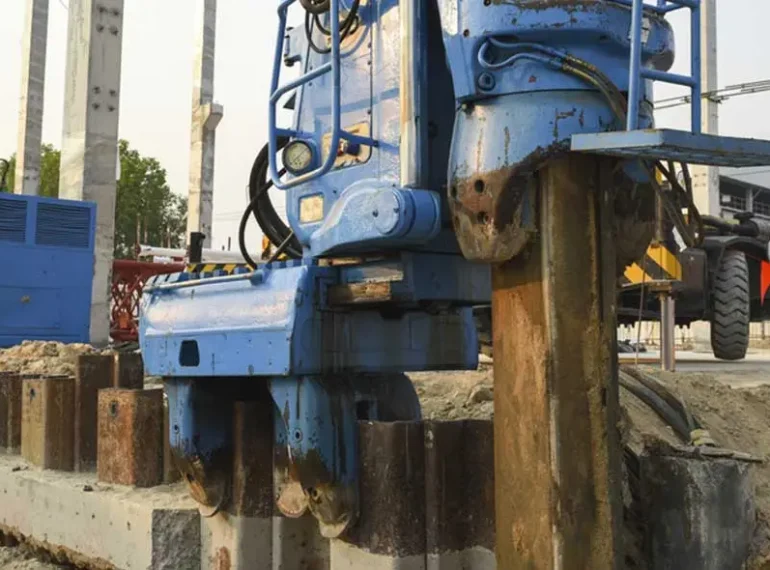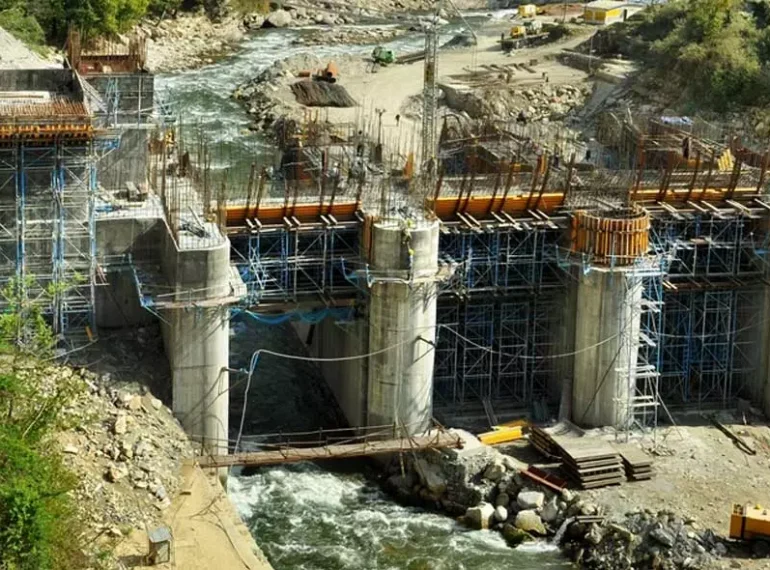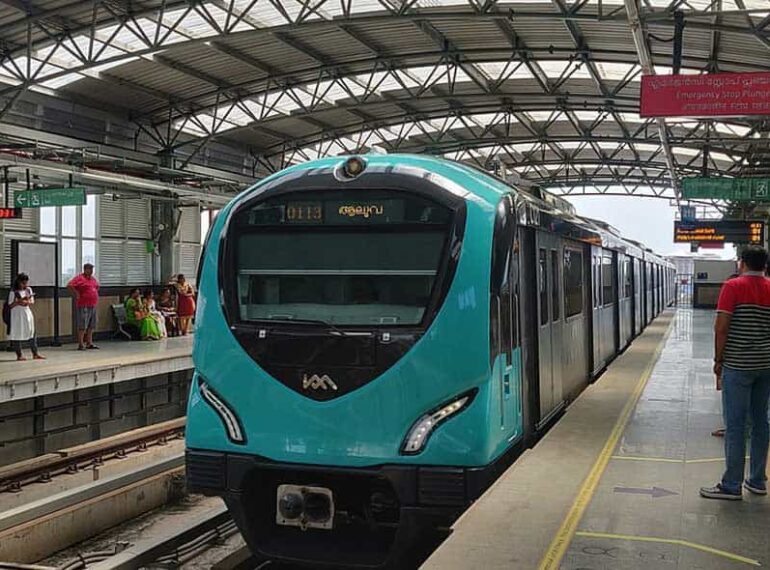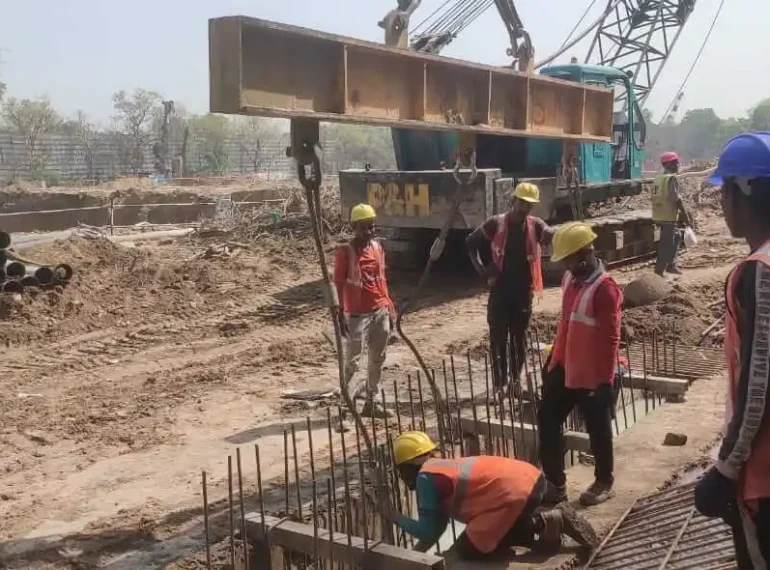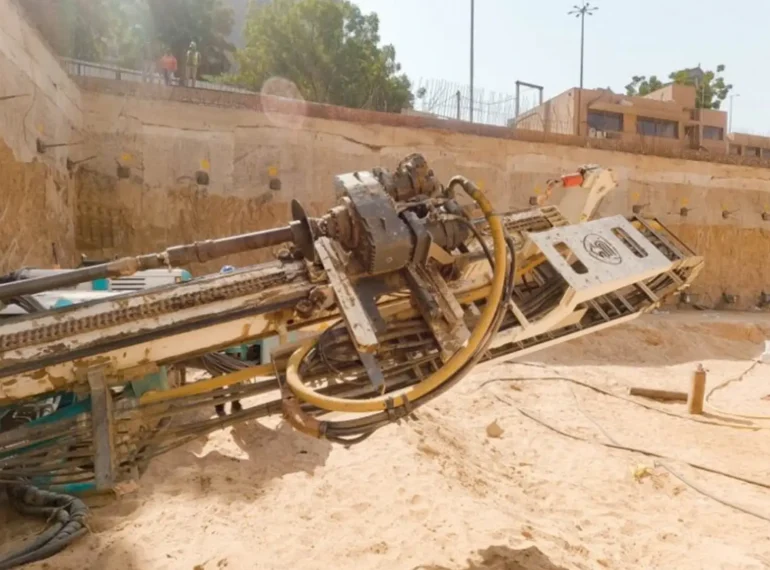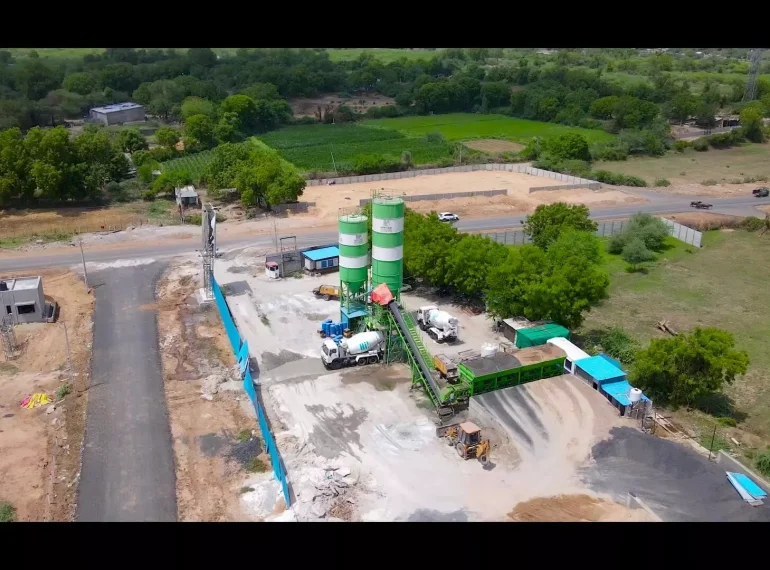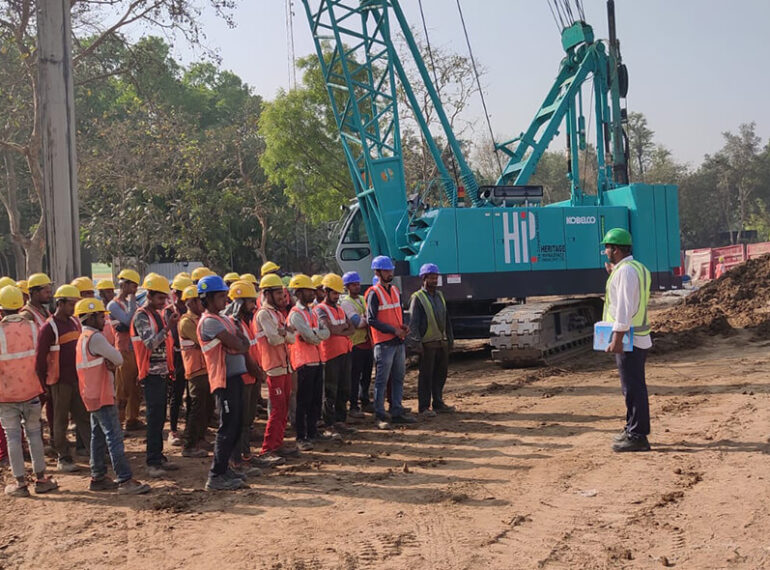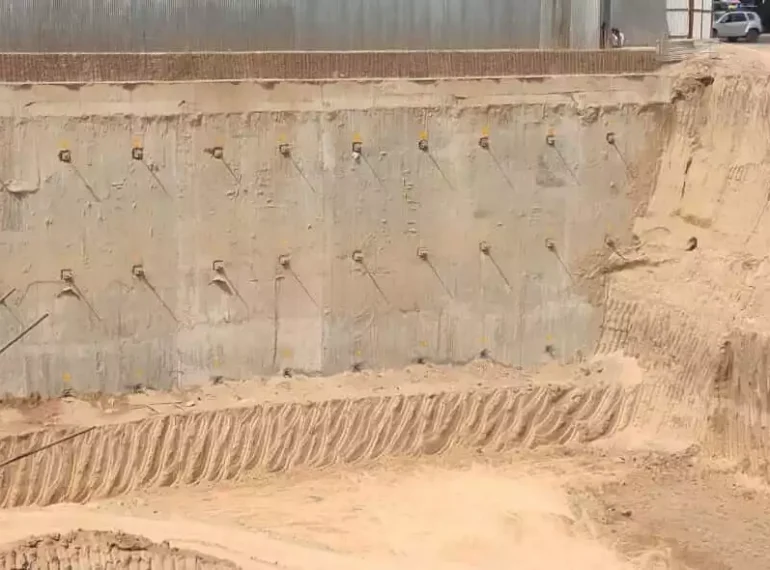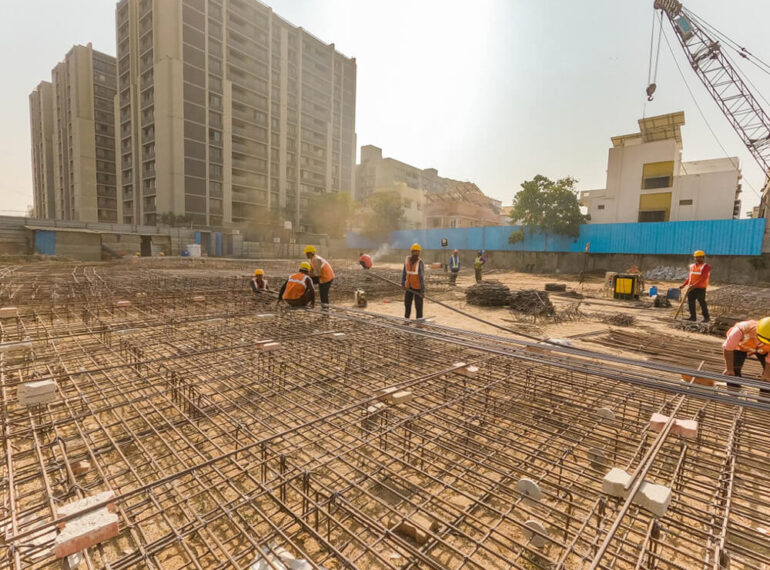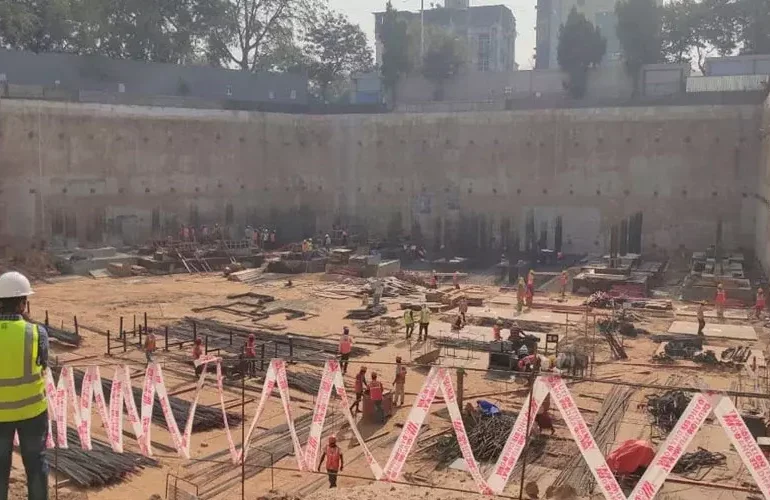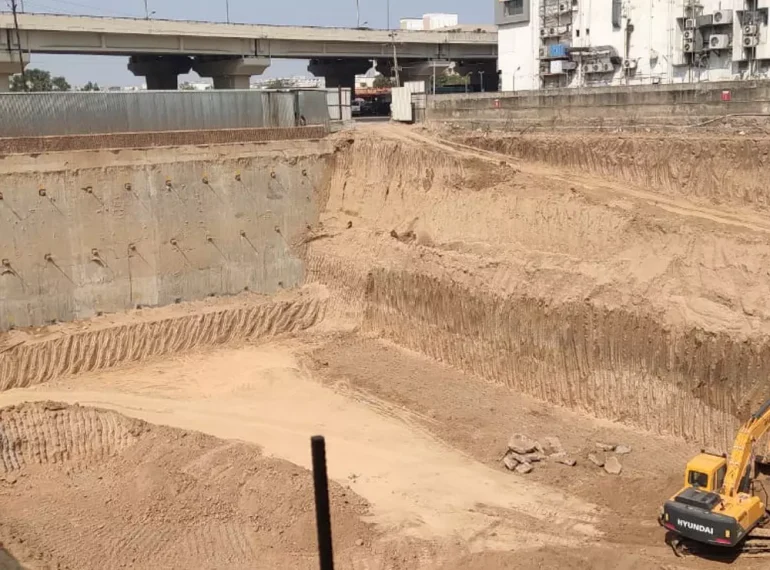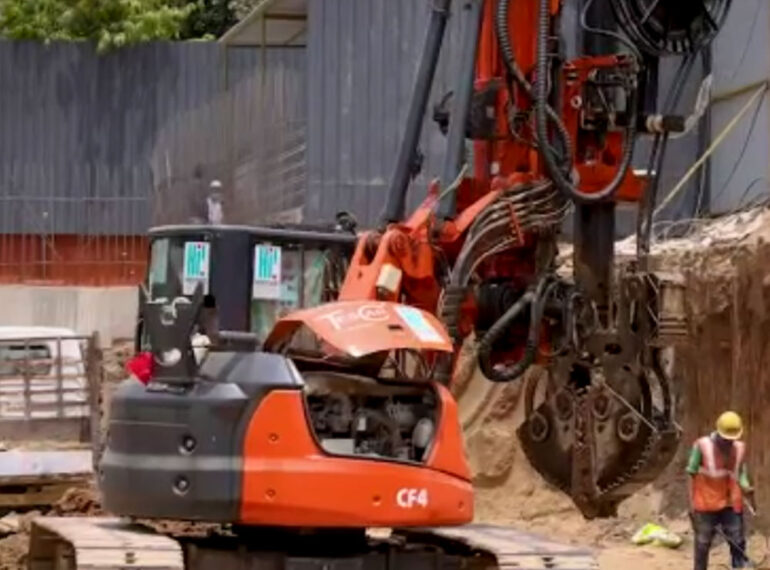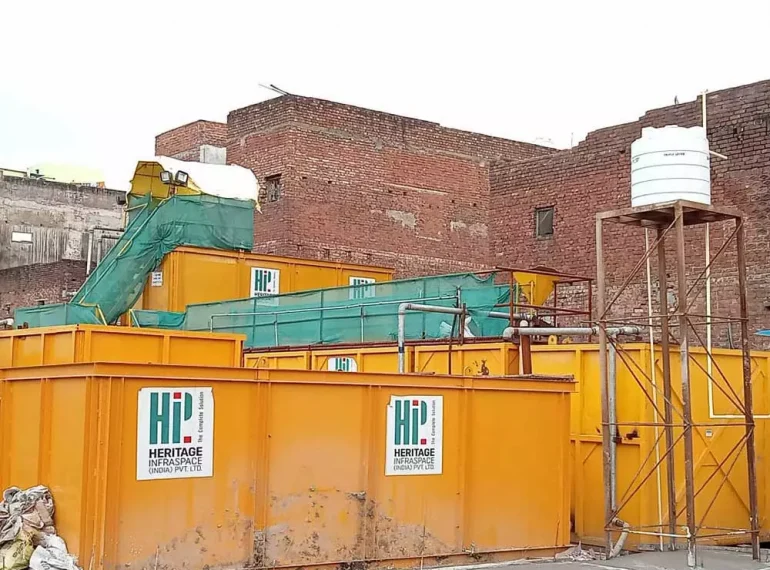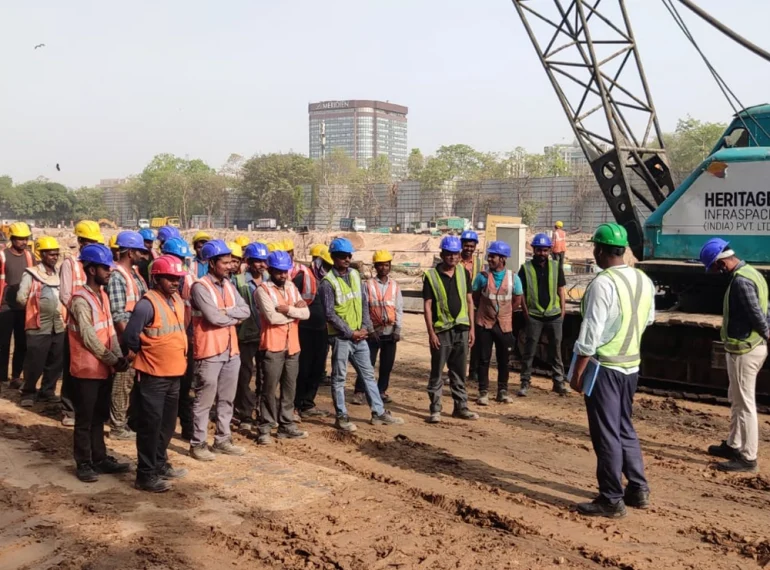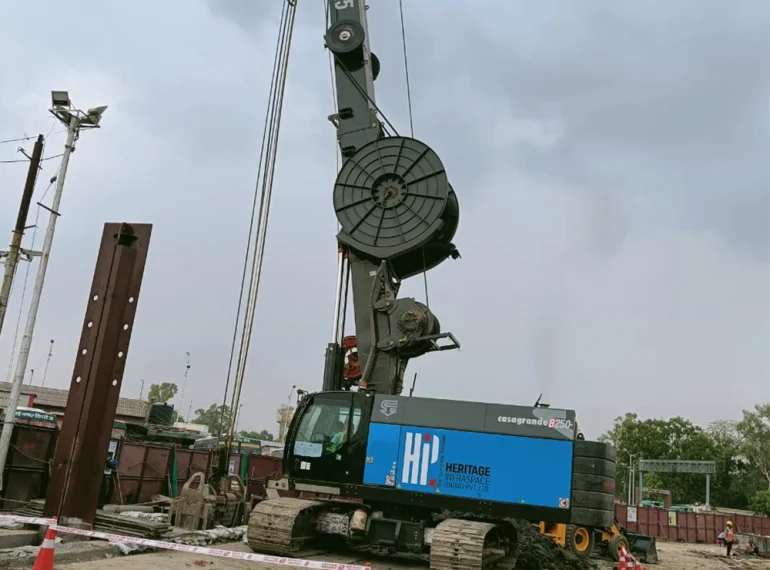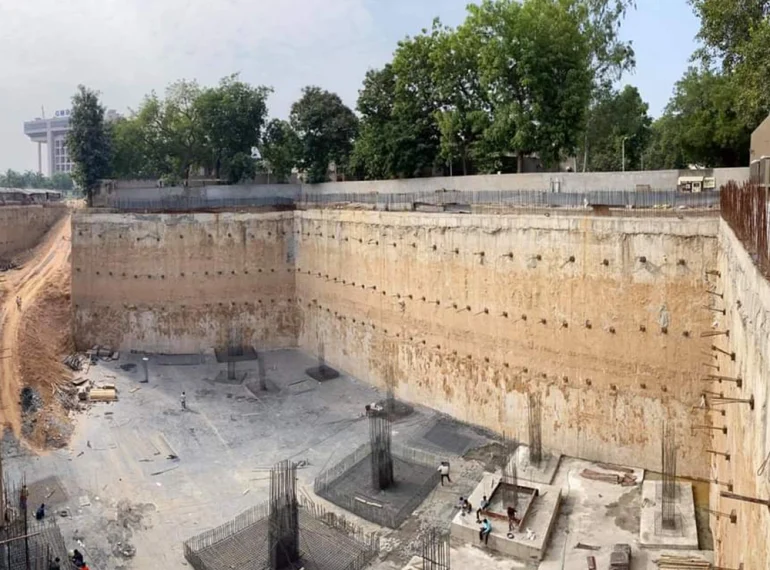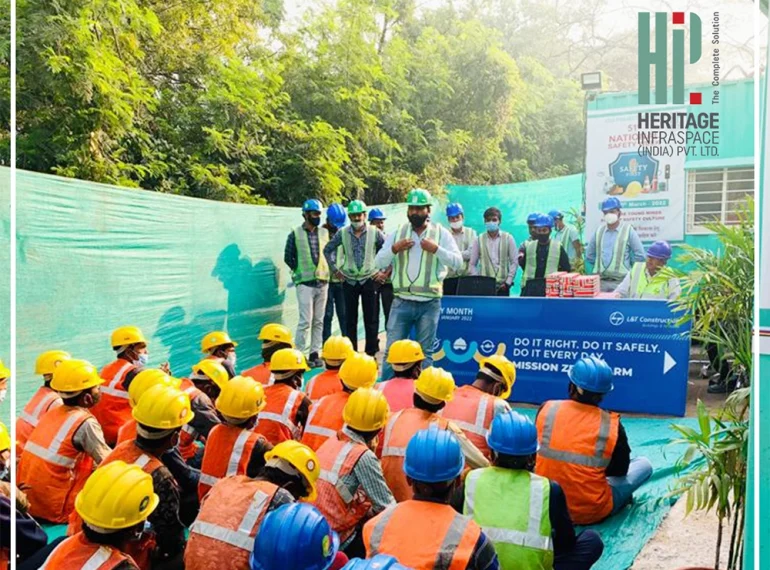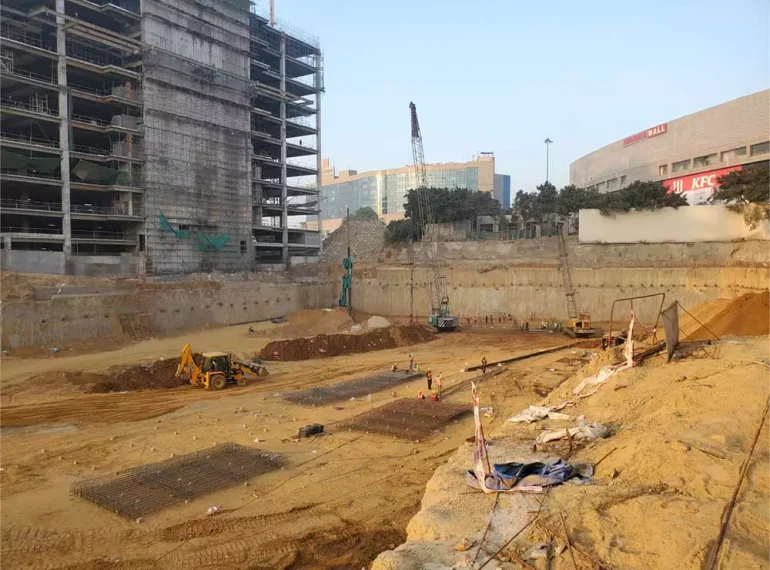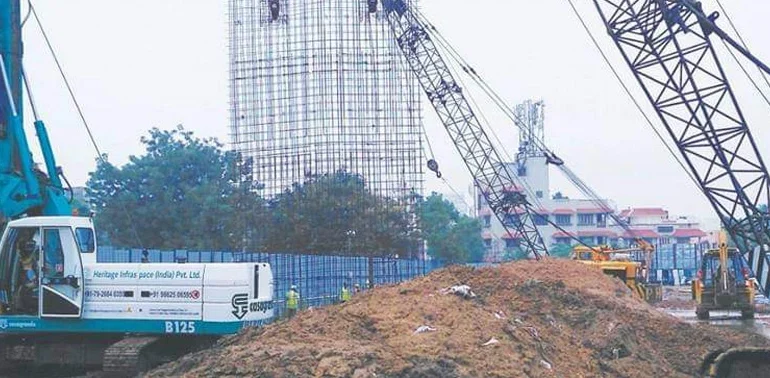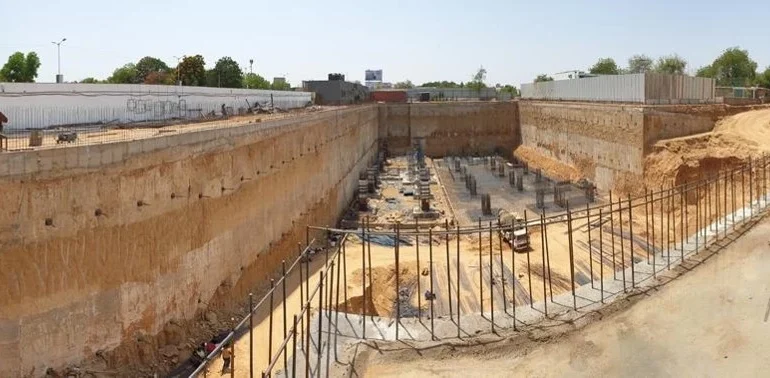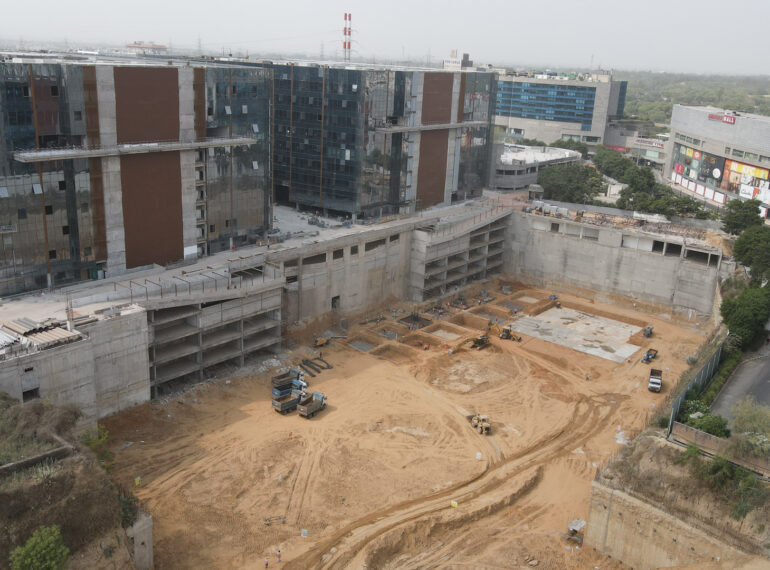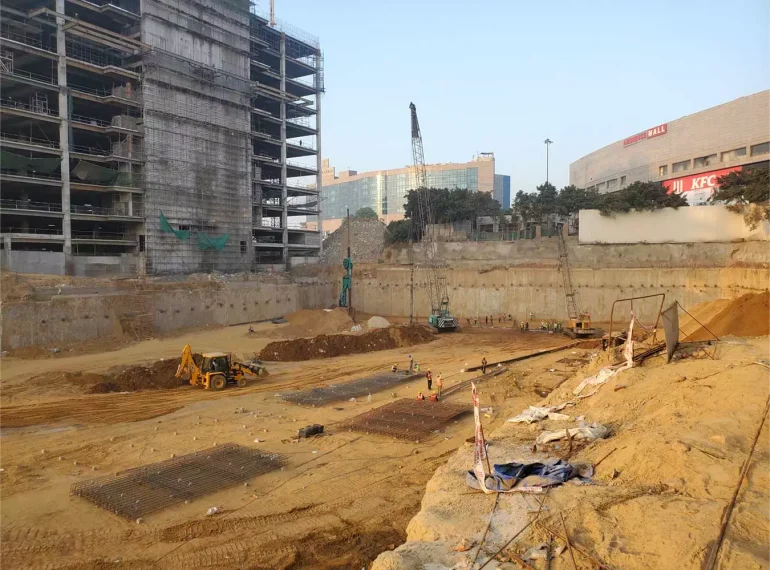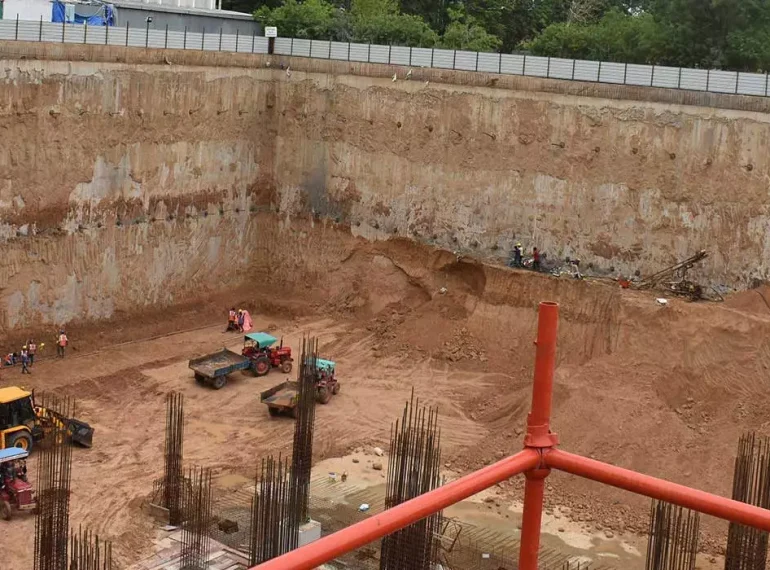Diaphragm walls are one of the most effective solutions for deep basement construction in urban areas. They offer several advantages, such as space efficiency, minimal ground settlement, excellent structural integrity and watertightness. However, diaphragm wall construction also poses various challenges and disruptions in urban environments, such as limited space and access, existing infrastructure and utilities, noise and vibration control, groundwater management and soil conditions. In this blog, we will explore how these challenges and disruptions can be overcome and minimised by using modern methods and technologies and showcase some successful examples of diaphragm wall projects in India and other countries.
Diaphragm Wall Construction in Urban Environments
Diaphragm walls are underground reinforced concrete walls that are constructed by excavating narrow trenches and filling them with concrete. They are typically used for basement construction, deep excavation and retaining walls in urban areas, where space is limited and conventional methods are not feasible or cost-effective. Diaphragm walls have several advantages over other methods, such as:
- They can be constructed in any shape and depth, depending on the project requirements and site conditions.
- They can resist high lateral loads and bending moments, providing excellent structural stability and durability.
- They can form a watertight barrier, preventing groundwater ingress and reducing the need for dewatering.
- They can reduce the ground settlement and deformation, minimizing the impact on adjacent structures and utilities.
View this post on Instagram
However, D-wall construction also faces various challenges and disruptions in urban environments, such as:
- Limited space and access: The site area and access roads may be constrained by existing buildings, traffic and pedestrians, making it difficult to transport and operate the equipment and materials.
- Existing infrastructure and utilities: The site may be surrounded by or contain underground or overhead utility lines, such as water, gas, electricity and communication, which may interfere with the excavation and installation of the diaphragm walls.
- Noise and vibration control: The excavation and concreting of the diaphragm walls may generate high levels of noise and vibration, which may disturb the nearby residents and businesses and cause damage to the adjacent structures and utilities.
- Groundwater management: The groundwater level and pressure may vary depending on the site location and season, affecting the stability of the trench and the quality of the concret
- Soil conditions: The soil type and properties may vary along the depth and width of the trench, affecting the excavation and concreting of the diaphragm walls.
To overcome these challenges and minimise these disruptions, modern methods and technologies have been developed and applied in D-wall construction, such as borehole drilling method, horizontal rebar cage movement, grouting piles with reinforcing bars, prestressing of diaphragm walls, top-down construction method, anchoring and water stopper systems, etc. These methods and technologies will be discussed in the next section, along with some examples and case studies of successful diaphragm wall projects in India and other countries.
Overcoming Challenges and Minimising Disruptions of Diaphragm Wall Construction
In this section, we will discuss some of the common methods and technologies used to overcome the challenges and minimise the disruptions of diaphragm wall construction in urban environments and provide some examples and case studies of successful diaphragm wall projects in India and other countries.
Borehole Drilling Method
One of the challenges of diaphragm wall construction is to deal with hard rock layers, which may be encountered at certain depths of the trench. These rock layers may be difficult or impossible to excavate using conventional methods, such as mechanical or hydraulic grabs and may require blasting or breaking, which may cause noise, vibration and safety issues.
To overcome this challenge, a borehole drilling method can be used, which involves drilling boreholes through the rock layers using a rotary drilling rig and then filling them with concrete. This method can create a continuous diaphragm wall through the rock layers, without causing excessive noise, vibration, or safety issues.
An example of a diaphragm wall project that used the borehole drilling method is the LG06 underground station in Taipei MRT, Taiwan. The project involved constructing a 30 m deep diaphragm wall around the station, which encountered hard rock layers at 15 m depth. The borehole drilling method was used to drill through the rock layers and then fill them with concrete. The diaphragm wall was completed, providing a stable and watertight structure for the station.
Horizontal Rebar Cage Movement
Another challenge of diaphragm wall construction is to avoid damaging the existing underground utility lines, which may be located near or within the trench. These utility lines may include water, gas, electricity and communication lines, which may be vital for the functioning of the urban area. If these utility lines are damaged, it may cause service interruption, safety hazards and legal liabilities.
To avoid this challenge, a horizontal rebar cage movement method can be used, which involves moving the rebar cage horizontally along the trench, instead of lowering it vertically. This method can prevent the rebar cage from hitting or cutting the utility lines and allow the D-wall to be constructed without affecting the utility services.
An example of a diaphragm wall project that used the horizontal rebar cage movement method is the LG06 underground station in Taipei MRT, Taiwan. The project involved constructing a 30 m deep diaphragm wall around the station, which encountered several utility lines along the trench. The horizontal rebar cage movement method was used to move the rebar cage along the trench, avoiding the utility lines. The diaphragm wall was completed, without damaging the utility services.
Grouting Piles with Reinforcing Bars
Another challenge of diaphragm wall construction is to protect the adjacent structures, such as houses, buildings and bridges, which may be affected by the excavation and concreting of the diaphragm walls. These structures may be subject to ground settlement, deformation, or damage, due to the removal of soil and the change of stress and strain in the ground.
To protect these structures, the grouting piles with reinforcing bars method can be used, which involves installing grouting piles with reinforcing bars around the diaphragm wall trench and then injecting grout into the piles. This method can create a rigid and strong support for the adjacent structures and prevent them from settling, deforming, or damaging.
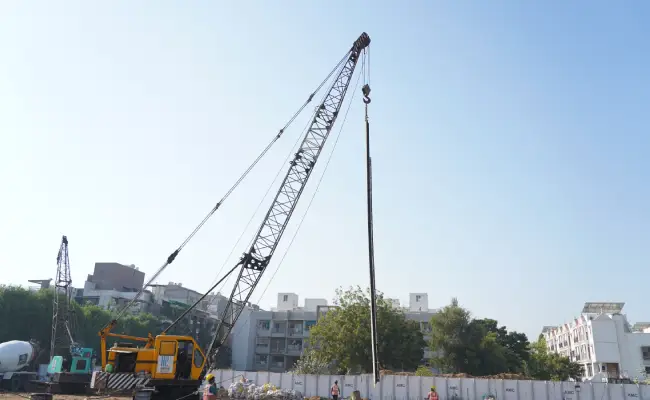
An example of a diaphragm wall project that used the grouting piles with reinforcing bars method is the LG06 underground station in Taipei MRT, Taiwan. The project involved constructing a 30 m deep diaphragm wall around the station, which was adjacent to several houses and buildings. The grouting piles with reinforcing bars method was used to install grouting piles with reinforcing bars around the trench and then inject grout into the piles. The diaphragm wall was completed, without causing any damage to the adjacent structures.
Prestressing of Diaphragm Walls
Another challenge of D-wall construction is to optimize the design and performance of the diaphragm walls, especially for large and deep structures, such as basements, tunnels and dams. These structures may require a large amount of reinforcement steel and concrete, which may increase the cost and complexity of the construction.
To optimize the design and performance of the diaphragm walls, a prestressing method can be used, which involves applying a compressive force to the diaphragm walls using tendons or cables. This method can reduce the reinforcement steel and concrete required and improve the structural strength and durability of the diaphragm walls.
An example of a diaphragm wall project that used the prestressing method is the basement construction of a high-rise building in Mumbai, India. The project involved constructing a 25 m deep diaphragm wall around the basement, which required a large amount of reinforcement steel and concrete. The prestressing method was used to apply a compressive force to the diaphragm wall using tendons, reducing the reinforcement steel and concrete required by 30% and 20%, respectively. The diaphragm wall was completed, providing a cost-effective and high-performance structure for the basement.
Top-Down Construction Method
Another challenge of diaphragm wall construction is to reduce the excavation depth and duration, especially for deep basements in urban areas. The excavation depth and duration may affect the stability of the trench and the quality of the concrete, as well as the impact on the surrounding areas and residents, such as noise, vibration, dust and traffic.
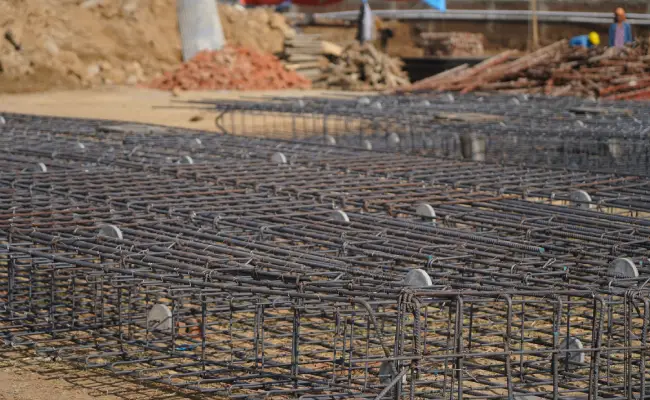
To reduce the excavation depth and duration, a top-down construction method can be used, which involves constructing the diaphragm wall and the basement floors simultaneously, from the top to the bottom. This method can reduce the excavation depth and duration by 50% and 40%, respectively, compared to the conventional bottom-up method, which involves excavating the entire basement depth and then constructing the floors from the bottom to the top.
An example of a diaphragm wall project that used the top-down construction method is the basement construction of a high-rise building in Mumbai, India. The project involved constructing a 25 m deep diaphragm wall around the basement, which required a long excavation time and a large excavation volume. The top-down construction method was used to construct the diaphragm wall and the basement floors simultaneously, from the top to the bottom, reducing the excavation time and volume by 50% and 40%, respectively. The diaphragm wall was completed, providing a fast and efficient structure for the basement.
Anchoring and Water Stopper Systems
Another challenge of diaphragm wall construction is to enhance the stability and water tightness of the diaphragm walls, especially for deep and complex structures, such as tunnels, dams and reservoirs. These structures may be subject to high water pressure and seepage, which may affect the structural performance and durability of the diaphragm walls.
To enhance the stability and water tightness of the diaphragm walls, anchoring and water stopper systems can be used, which involve installing anchors and water stoppers along the diaphragm walls. Anchors are steel bars or cables that are inserted into the ground and attached to the diaphragm walls, providing additional support and resistance against lateral forces. Water stoppers are rubber or metal strips that are embedded into the joints of the diaphragm walls, preventing water leakage and infiltration.
An example of a diaphragm wall project that used anchoring in construction and water stopper systems is the retaining wall for a metro tunnel in Delhi, India. The project involved constructing a 20 m deep diaphragm wall around the tunnel, which was subject to high water pressure and seepage. Anchoring and water stopper systems were used to install anchors and water stoppers along the diaphragm wall, enhancing the stability and water tightness of the structure. The diaphragm wall was completed, providing a safe and reliable structure for the tunnel.
What are the Challenges of Diaphragm Wall Construction and How to Overcome Them?
D-wall construction is not without its challenges and limitations, such as:
High cost and time
Diaphragm wall construction is a complex and labour-intensive process that requires specialized equipment and skilled workers. It also involves multiple stages and quality checks, which can increase the cost and time of the project. However, these costs and time can be offset by the long-term benefits and savings that d-wall construction provides, such as lower maintenance, higher performance and greater safety.
Difficult site access and logistics
Diaphragm wall construction requires a large working area and a clear access route for the equipment and materials. It can be difficult to perform d-wall construction in congested and urban areas, where space and traffic are limited. However, these challenges can be overcome by careful planning and coordination, as well as using smaller and more efficient machines and tools.
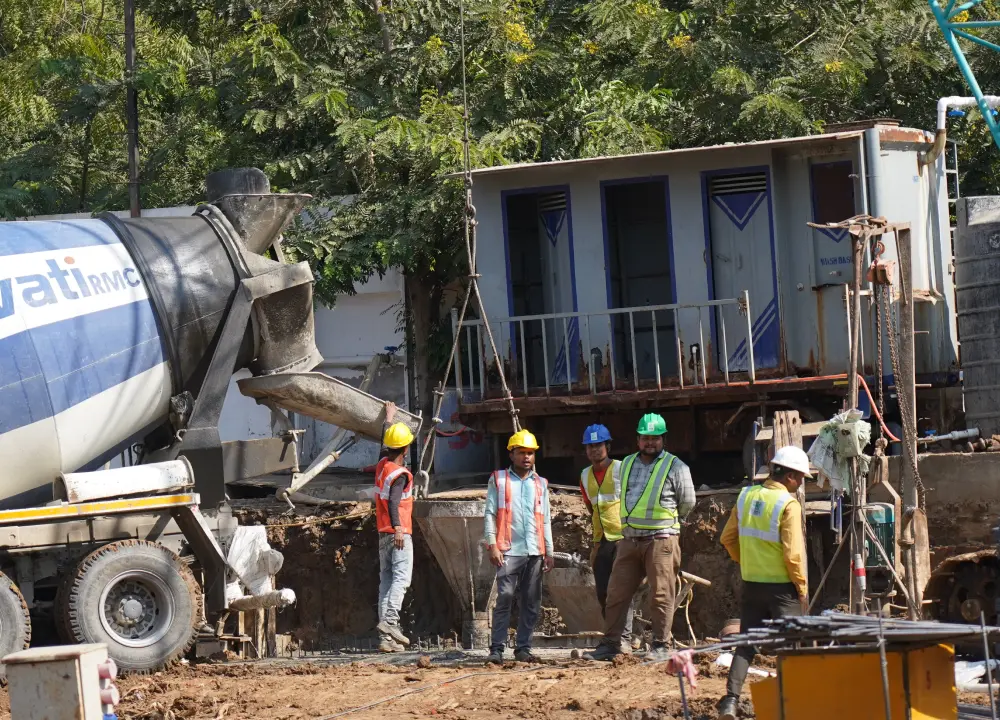
Quality control and inspection
Diaphragm wall construction requires strict quality control and inspection to ensure that the walls are constructed according to the specifications and standards. Any defects or deviations in the walls, such as cracks, voids or misalignments, can compromise the integrity and performance of the structure. Therefore, it is essential to use advanced techniques and technologies, such as sonic logging, cross-hole sonic logging and ultrasonic testing, to monitor and verify the quality of the walls.
Concluding thoughts…
Diaphragm wall construction is a valuable and versatile technique for urban infrastructure development in India. It can provide a stable and watertight structure for deep basements, deep excavations and retaining walls while overcoming challenges and minimising disruptions in urban environments. Heritage Infraspace Ltd is a leading company in diaphragm wall construction in India, with a proven track record of delivering high-quality and cost-effective projects. If you are interested in learning more about diaphragm wall construction, or if you have any questions or queries, please feel free to contact us at info@www.heritageconstruction.in. We would be happy to assist you with your diaphragm wall construction needs.
Frequently Asked Questions
Diaphragm walls are essential for deep basement and underground construction projects, as they provide strong and durable support for the soil and prevent water seepage. At Heritage Infraspace, we are the pioneers of diaphragm wall construction in India, with over 300 projects completed across the country.
Diaphragm walls are reinforced concrete structures that are built in situ beneath the ground level. They have a rectangular shape and are interlocked with each other to form a continuous wall. They can vary in thickness, width and depth depending on the project requirements. At Heritage Infraspace, we use the most advanced machinery and technology to construct diaphragm walls up to 60m deep.
The diaphragm is a key component of the structural system of a building, as it transfers the horizontal forces generated by wind, earthquake, or other loads to the vertical elements that resist them. Diaphragms can also provide stiffness and stability to the building. At Heritage Infraspace, we design and construct diaphragms that are suitable for different types of buildings and structures, such as basements, tunnels, bridges and dams.




